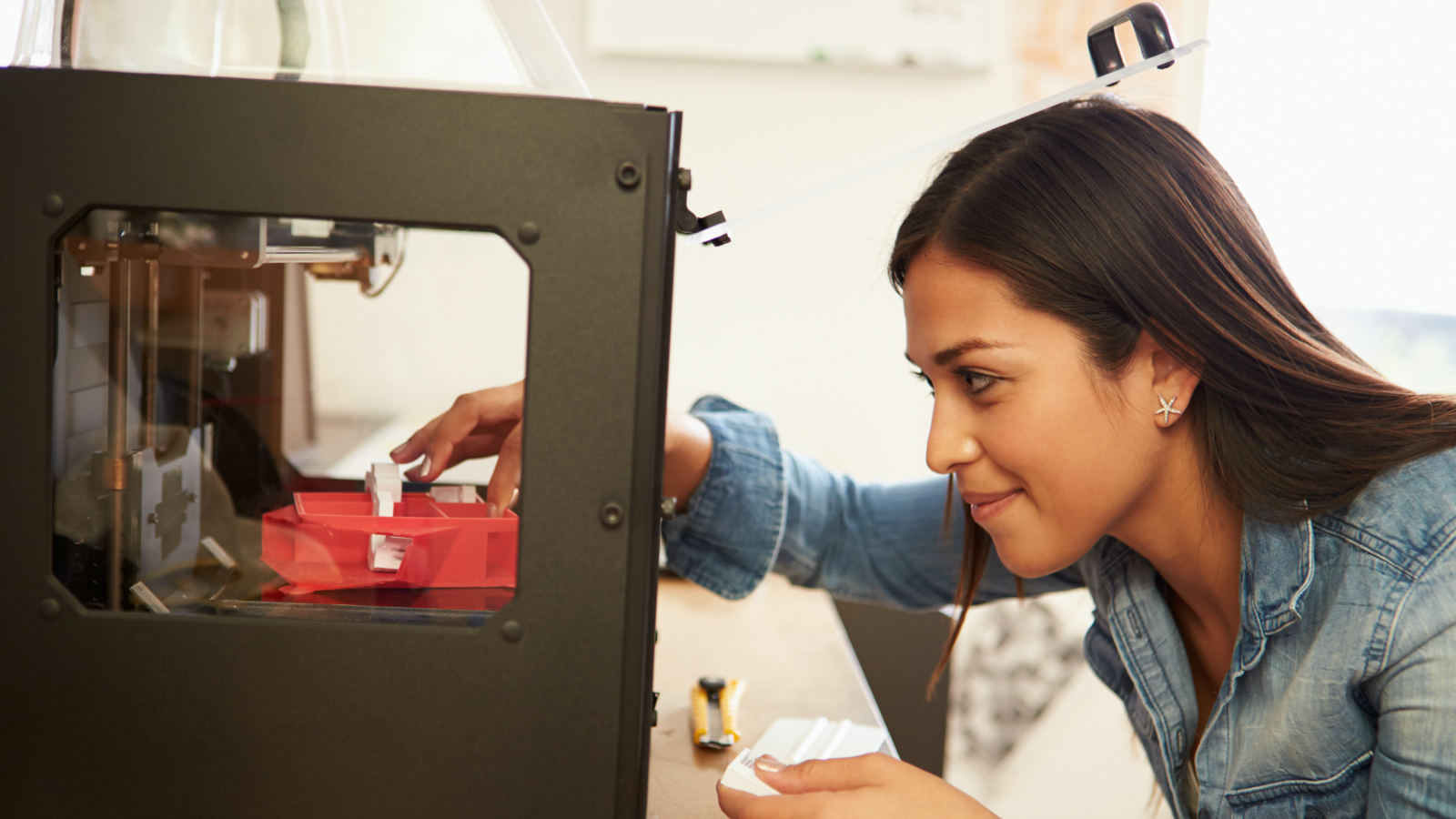Q. Dear Umbra,
Is there a way to know and compare the sustainability qualities of 3D printer “inks”?
Guest
Sacramento, California
A. Dearest Guest,
When people of decades past envisioned The Future, I’m fairly certain they pictured a desktop appliance capable of constructing everything from car parts to calzones, right alongside all the jetpacks, spaceships, and friendly robot maids. Even now, the concept sounds so sci-fi: a portable machine that can build pretty much any object we can dream up, layer by ultrathin layer. But The Future is here, my friends — and with it, the same questions of sustainability we should be asking about all of the other technological breakthroughs of modern life. I look forward to writing the inevitable column about jetpack energy efficiency somewhere down the line.
But today, we’re looking at 3D printer “inks,” which are really better described as “materials.” There’s nothing really inky about the various plastic, metal, ceramic, wood, paper, and other ingredients that get loaded into these printers and then squeezed out into any number of products. The possibilities are seemingly endless: You can even use foods and, wow, biological components like cells and tissues as base materials. So you can see how a question like yours, Guest, quickly becomes “How can you compare the sustainability qualities of … pretty much anything?”
However, I doubt the average person is out in the garage printing ears (paging Dr. Frankenstein, amiright?). Owners of at-home 3D printers are probably sticking to a much narrower range of materials — most likely different sorts of plastic. So let’s take a closer look at those options, shall we?
The two most commonly used plastics in the consumer 3D printing world are ABS (acrylonitrile butadiene styrene, for the chemistry buffs) and PLA (polylactic acid). Both are known as thermoplastics, which means they can be easily melted down and molded. And environmentally, there’s a clear winner here: PLA. That’s because it’s a bioplastic derived from renewable materials such as corn, sugarcane, or tapioca. PLA is not without its issues, true, but unlike other plastics, it’s not based on petroleum and requires less energy to produce. What’s more, it’s compostable via commercial composting outfits, if not in your own backyard. Also in the plus column: It releases fewer irritating fumes than other plastics when the 3D printer is doing its thing. PLA isn’t suitable for every use — it can’t handle the highest temperatures, for one — but it’s among the greenest choices out there.
ABS isn’t exactly an eco-villain, though. It’s tough (as anyone who has ever stepped on an errant LEGO brick can attest) and long-lasting, which is better than a less-durable, more-disposable plastic. And though it’s a petro-plastic, it’s at least recyclable. And there’s at least one ABS filament on the market that claims to be biodegradable.
There are a bunch of other plastic options, of course, among them nylon, PET, high-impact polystyrene, polycarbonate, and PVA (polyvinyl alcohol). PVA stands out in this crew because it’s water-soluble and biodegradable. PET — the stuff from which our disposable plastic water bottles spring — also shows promise as an eco-friendly material because you might soon be able to recycle your old bottles into printer filament at home.
Beyond plastics, this question really begins to expand. I’ve seen all kinds of creative non-plastic gizmos popping out the business end of a 3D printer: rings, lamp shades, paper cathedrals, wooden owl figurines, and the list goes on. So rather than droning on about the relative merits of aluminum versus stainless steel versus gold, ceramic, and porcelain, I’ll leave you with a framework to evaluate those materials on a case-by-case basis. One, how impactful is the production of the raw material? Is it highly energy-intensive or toxic? Two, how durable is it? Will your creation serve for many years, or is it destined to be a flimsy throwaway? And three, what happens at the end of its useful life? Can this material be easily composted or recycled, or will it end up in the landfill? You’ll have to do some research, Guest, but these questions will guide you to the greenest options for whatever project you’re cooking up.
In the meantime, I’ll be dreaming about the The Future. I do hope it doesn’t take too long for the flux capacitor to get here.
Extrudedly,
Umbra



